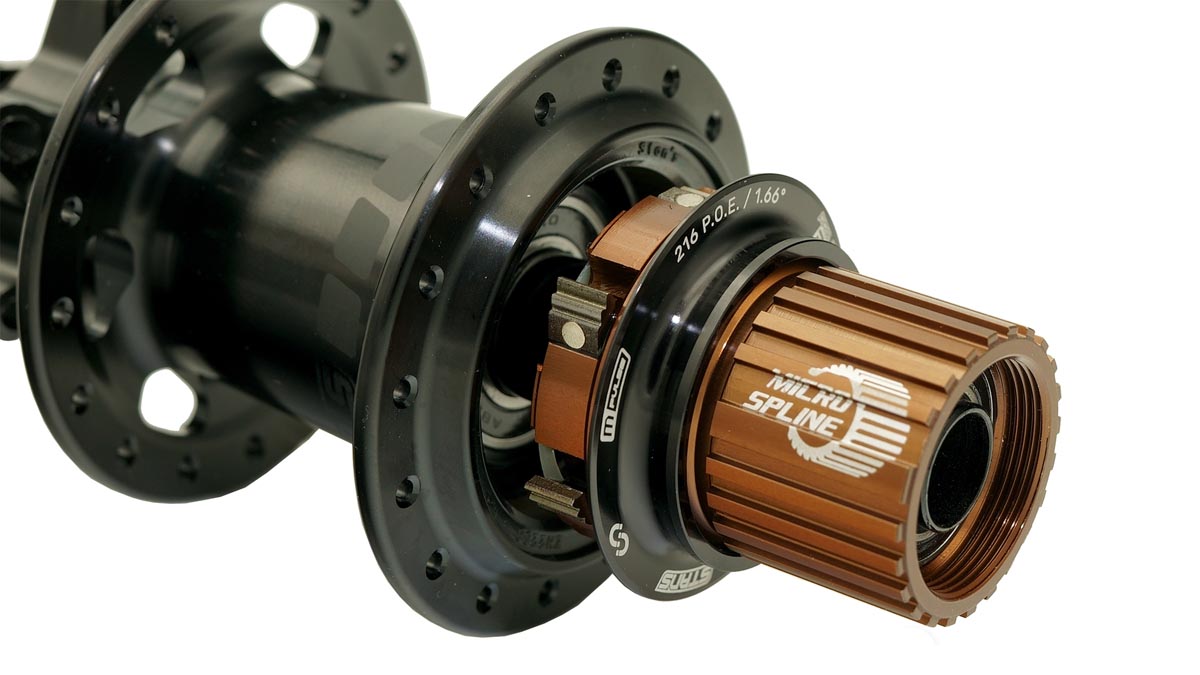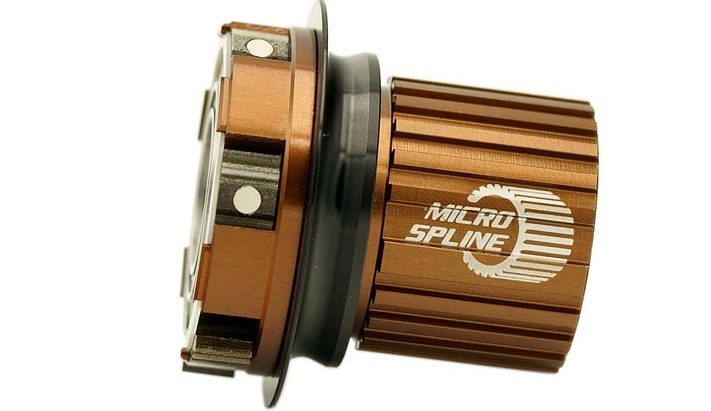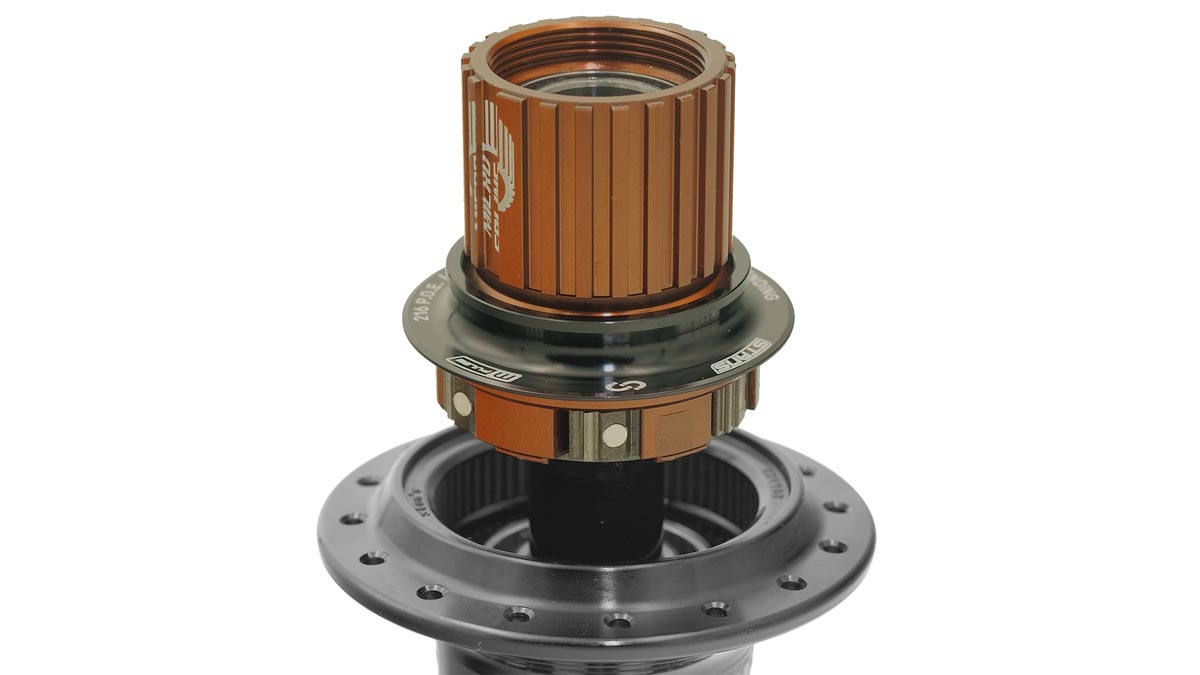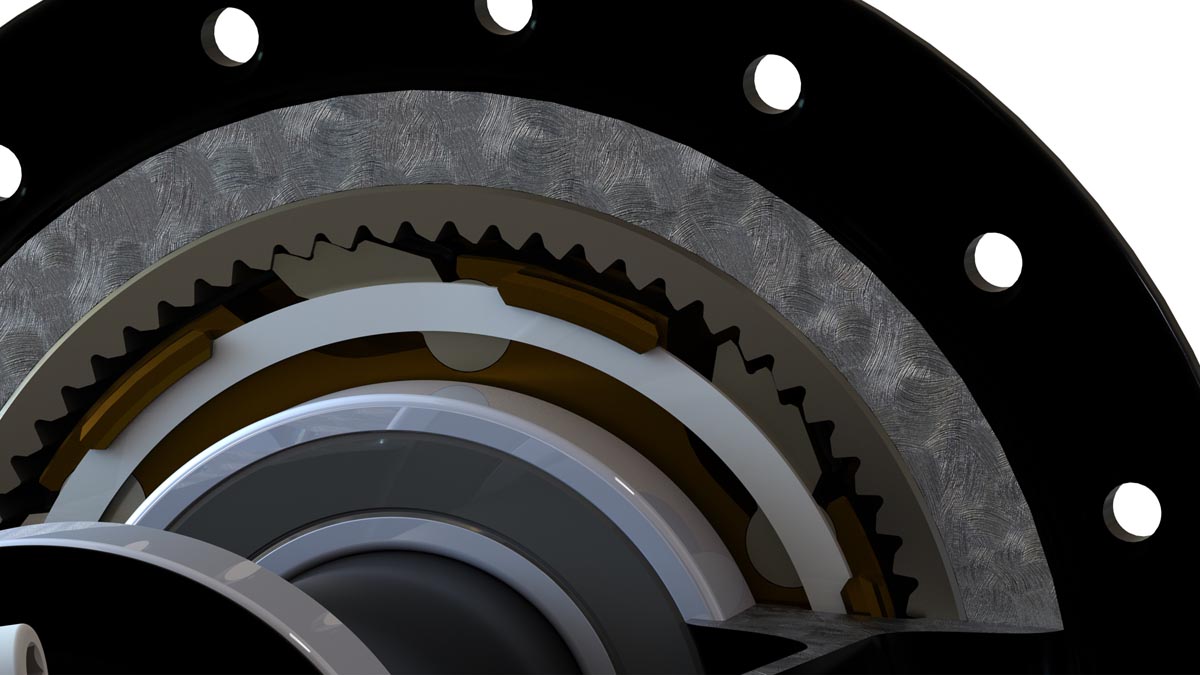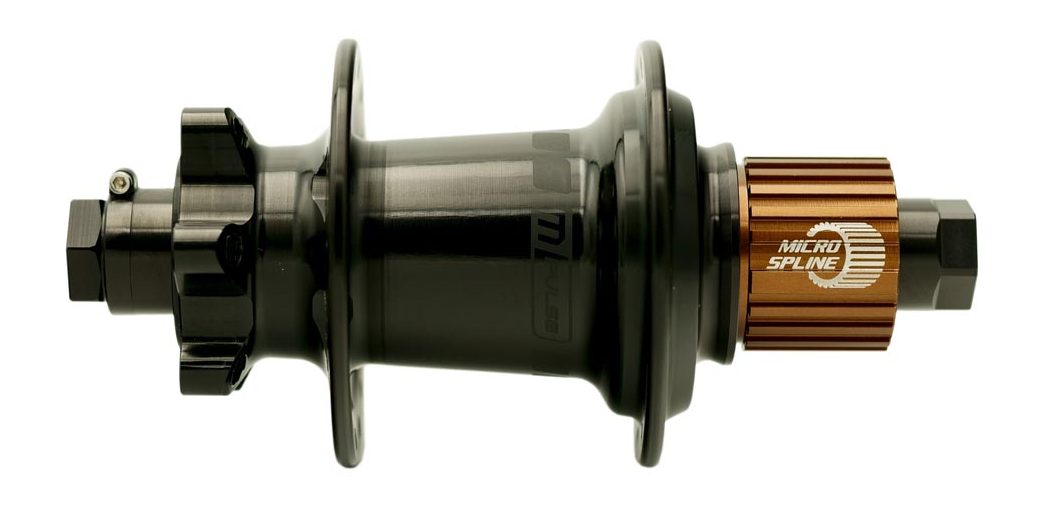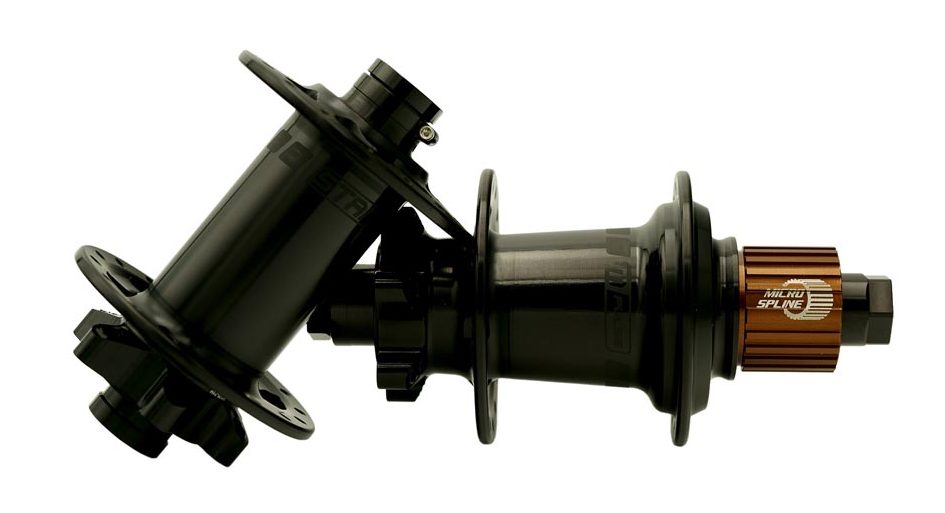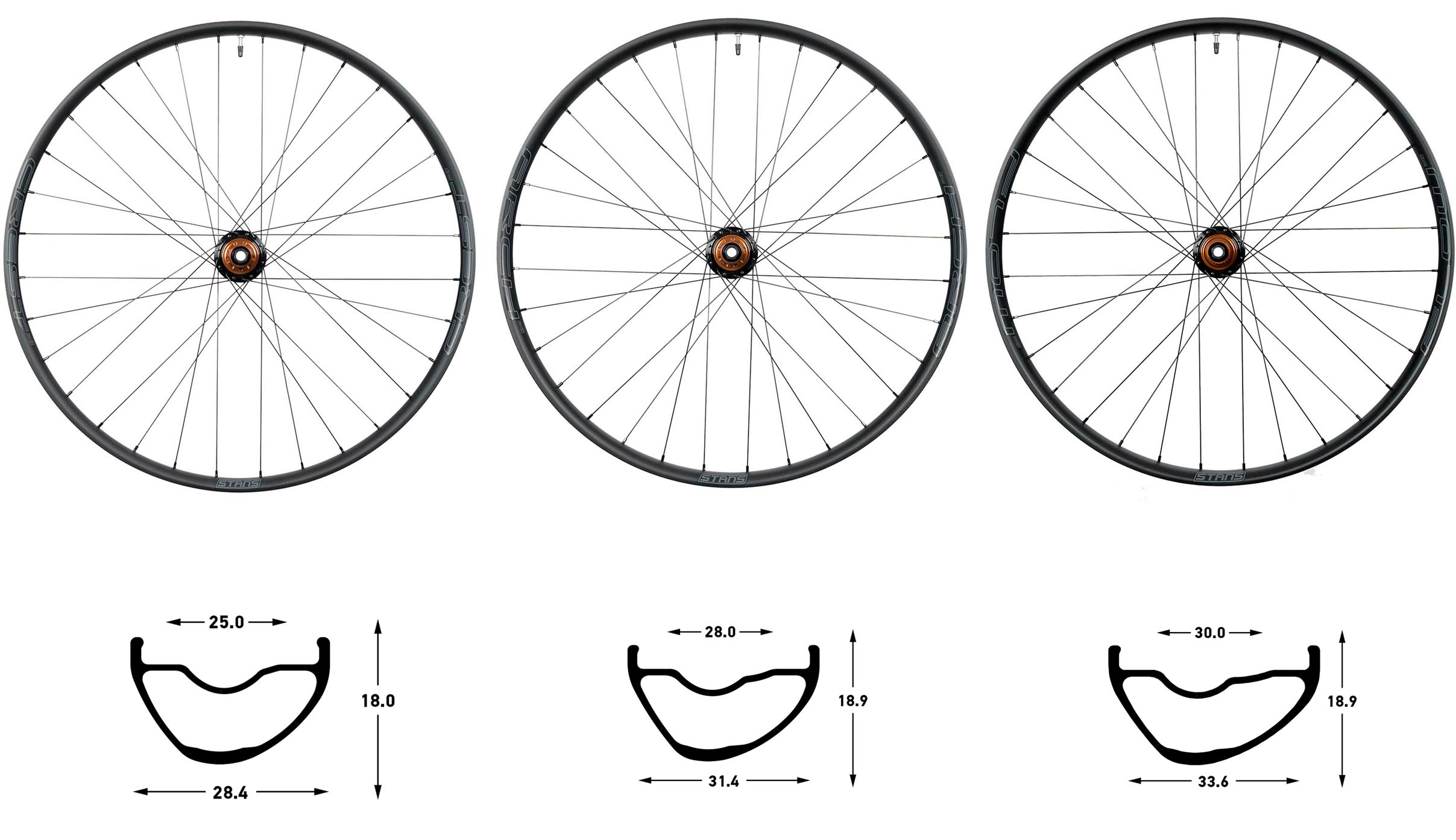It’s hard to believe that it’s been almost five years since Project 321 launched their magnetic drive system at NAHBS. Now, that clever magnetic pawl system has found a new home—in the shells of Stan’s new M-Pulse hubs. Developed to eliminate freehub drag while coasting, Stan’s is completely invested in the idea and will offer it on almost all of their mid to high-level products.
You may be asking yourself, “OK, magnets. But how do they work?” Instead of a traditional pawl spring design, where tiny springs physically push the individual pawls into the engagement ring, these hubs use magnetic pawls. The six hardened steel pawls are fitted with neodymium rare earth magnets which pull the pawls into the hardened steel drivering rather than push.
Both Project 321 and Stan’s point out that this provides the system a unique advantage over traditional springs. The magnetic force on the pawls gets stronger as they get closer to the drivering and weaker as they coast, which helps to reduce drag. On the flip side, traditional spings are weakest when they’re extended, pushing against the drivering, but stronger when compressed. Because of this, Project 321 and Stan’s claim that this system offers a significant reduction in drag and friction with reliable engagement.
And at 216 points of engagement which works out to 1.66° of rotation, they’re very quick to engage as well. Those who are familiar with the Project 321 system may notice that Stan’s isn’t offering a ‘quiet version’ of the pawls. Instead, they’re sticking with the louder versions which offer more teeth on each pawl for more secure engagement with the drivering.
Rather than the typical press-fit end caps, Stan’s has chosen an adjustable preload system with a burly 17mm 7075 aluminum axle with custom-filled Enduro bearings. Extensive testing resulted in a double-row main freehub bearing which was found to offer more durability, and all bearings are shielded, keeping all of the bearing seals hidden from the elements.
For the Stan’s M-Pulse hub build, all freehub body shells, magnetic pawls, ratchet rings, spacers, and axles are manufactured in Bend, Oregon at Project321’s CNC shop. The hubs are then assembled in Big Flats, New York at Stan’s headquarters using Asian-made hub shells. The result is a high-quality hub with US-Made guts and a 5-year warranty from Stan’s.
While the front hub is fairly simple by comparison, it too will feature an adjustable preload. Hubs will be offered in 6-bolt or Centerlock brake configurations, and with Shimano Micro Spline, HR, or SRAM XDR freehubs.
Offered as part of complete wheelsets, M-Pulse hubs will start at $965 for the set with Stan’s MK4 Asymmetric rims including the 30mm wide Flow MK4, 28mm wide Arch MK4, and 25mm wide Crest MK4 which were launched last summer (now we also know the details of that secret hub that was teased). Stan’s also states that M-Pulse hubs will come standard on all carbon CB7 and Podium SRD wheelsets which start at $1,987. We love to see that for every wheelset equipped with M-Pulse hubs that Stan’s sells, they will donate $10 to the local trail group or cycling charity of your choice.
The only wheels that won’t have the M-Pulse hubs will be the DH/Enduro EX3 and more affordable S2 wheels. Those will use the new E-Sync hub which is a heavier duty, e-bike rated hub that offers a 47% higher torque rating than their previous Neo hub.
